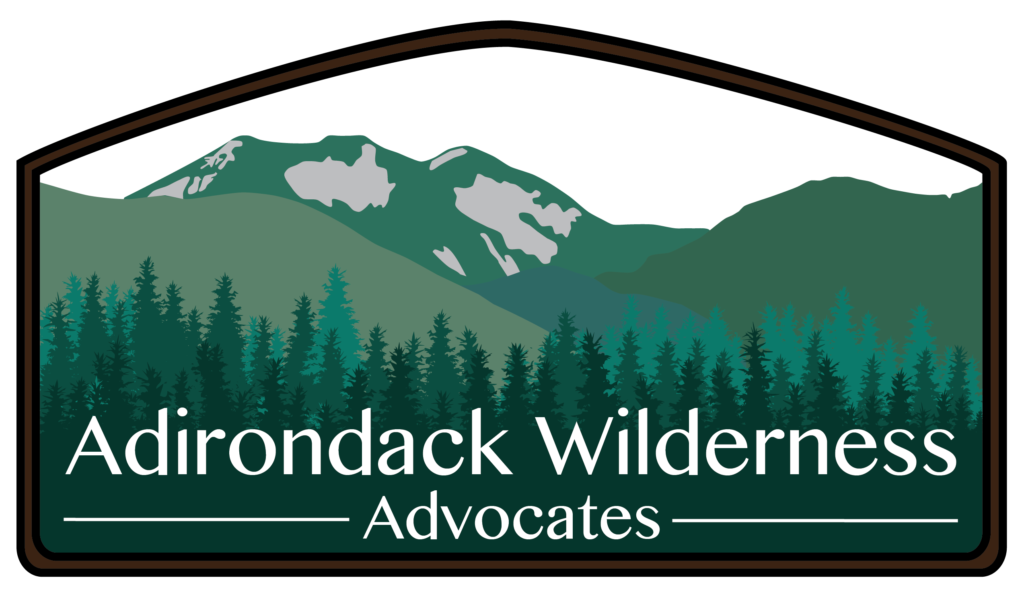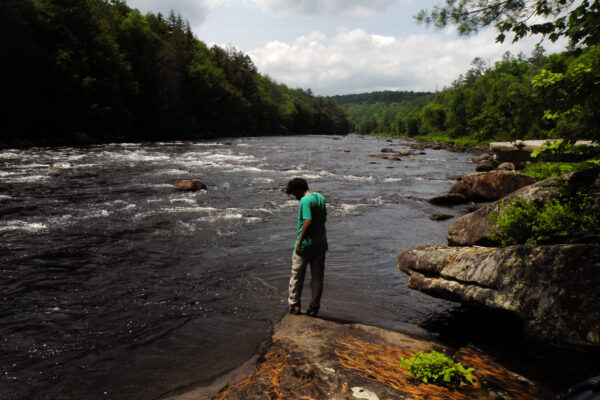During the course of the last year, much has been written about why the Boreas Ponds Tract should be classified as Wilderness by the Adirondack Park Agency (APA), but it is equally important to state plainly why this vast landscape should not be opened to motorized access. There are multiple reasons why anything less than a Wilderness classification would be harmful, including habitat fragmentation, the introduction of invasive species, resource degradation, and loss of the ponds’ intangible qualities of remoteness and solitude.
And not all impacts would be limited to just this one area. Opening easy motorized access into the Boreas Ponds Tract will have negative impacts on existing state lands, exacerbating many costly management issues in the eastern High Peaks Wilderness. Boreas Ponds presents the paradoxical situation in which we could add bulk acreage to the High Peaks Wilderness and still manage to degrade the landscape by allowing motor vehicles to come too close and making access too easy.
We are convinced that the defining nature of the Boreas Ponds Tract is its remoteness—one of the intangible qualities of a Wilderness that the State Land Master Plan (SLMP) identifies as a high priority for preservation. There have been many new state land purchases in the last twenty years, and many of these have become fine additions to the Wilderness Areas of the Adirondack Park. But Boreas Ponds is different because of the sheer size of the tract, and the fact that it is crossed by no public highways. Although it was once bisected by a powerline, that feature has long since been removed. The northern boundary backs up to the High Peaks, making portions of this property as remote as anyplace in New York—or any eastern state, for that matter. Think West Canada Lake. Think Cold River. That’s what Boreas Ponds could be!
But opening the tract to motorized recreation to the extent requested by local town governments would be highly destructive to the wilderness quality of the Boreas Ponds basin and adjacent slopes, and it would place the Value 1 wetlands at extreme risk. Motor vehicle use could encircle Boreas Ponds, passing around and through the Value 1 wetland complex. Coupled with the expected snowmobile usage, the possibility of wilderness recreation on the ponds would be eliminated at all times of the year, regardless of whether or not motorboats are allowed.
A major fault of this proposal is that it fragments the landscape into separate zones for recreational purposes, along lines that have no ecological significance; according to the SLMP, steep mountain slopes and low-lying wetlands are regarded as equal priorities for Wilderness protection. And the easy motorized access to and around Boreas Ponds would make it inevitable that nonnative fish species would be introduced to the waterways either through carelessness (i.e. the disposal of bait fish) or by deliberate action. Streams would remain fragmented due to the continued presence of culverts, required to keep the roads passable to motor vehicles. Shoreline areas would become degraded as boaters seek places to land. Continued maintenance of the dams would prevent the restoration of natural water flows.
If parking were made available at either LaBier Flow or Boreas Ponds, we expect this would quickly be discovered as an alternate summer access point for the adjacent High Peaks. High volumes of foot traffic would pass through the Boreas Ponds and Casey Brook tracts to reach the summits of Marcy, Haystack, and Allen. The roadside clearings at Boreas Ponds and LaBier Flow would become base camping areas for climbers, similar to South Meadow Lane, and the former lodge site at Boreas could develop into a clustered camping area similar to Marcy Dam. This would likely result in habituated black bears, user conflicts, and degraded campsites.
Roads are often a vector for terrestrial invasive species, especially along roadside edges and at cuts in gravel pits. They are also significant causes of habitat fragmentation. In terms of economic costs, the annual price tag for maintaining Gulf Brook Road, in light of its underlying soil conditions, is estimated to be $46,650.
The only way to mitigate these impacts is to promulgate strict regulations that will require a constant ranger presence to be enforced. That makes the economic cost of this alternative very high, as well as the risk for potential environmental harm. Therefore there is no logical reason to embrace this alternative as a viable solution.
As a tract of private land, Boreas Ponds was a 20,000-acre buffer against the southern foothills of the High Peaks—a buffer that will be eliminated if the road is opened any further than it already is. Therefore the classification of this tract goes far beyond the question of “reasonable access” to a potential paddling destination. The decision made by the APA will have a direct impact on adjacent state lands that have been a remote part of the Forest Preserve since the 1920s. Road access to Boreas Ponds—unnecessary to accommodate an adventurous public, which has already accepted the challenge presented by the closed gates—will come at the expense of the remote quality of the adjacent High Peaks Wilderness.
The recent experience with the Essex Chain Lakes should be an education that mixed classifications hold no appeal with the public. Rather than attracting more people as was the goal—for the purposes of improving tourism in the town of Newcomb—the truth is that the Essex Chain has been woefully underutilized. The micro-classifications are confusing, and they fail to provide the landscape-level experiences that motivate people to drive for hours to an out-of-the-way destination.
Wilderness preservation has been a driving force in the history of the Adirondack Park, and there is no evidence to suggest that the people of New York State have any interest in walking away from that legacy. Indeed, the overwhelming public response to the APA’s public comment period in 2016 gives the state a clear mandate for how to proceed: protect as much of the Boreas Ponds Tract as wilderness as possible.



